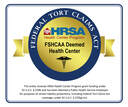
Health-care providers are increasing the number of urgent-care facilities in the area in an effort to meet growing demand.
The urgent-care component of the health care network of providers has seen exponential growth in recent years.
According to a Kalorama Information report on urgent-care centers, spending at urgent-care facilities rose from an average rate from $11.8 billion in 2011 to $15 billion in 2017. This growth is expected to continue through 2021, according to the report.
Community Care of West Virginia is different than other urgent care providers in that their clinics also provide walk-in appointments for primary care, in addition to the care offered for acute medical needs, according to Patricia Collett, director of medical operations.
“Our whole premise behind that was to be able to offer healthcare services to not just patients of Community Care on the off-hours of evenings and weekends and holidays, but also to offer those services to patients who did not have a primary-care provider,” Collett said. “Our walk-in clinics are co-located or in close proximity to our chronic-care locations, which gives them the capability to meet our chronic-care providers before they schedule that appointment.”

“For the Weston outpatient center, WVU Medicine has specialists who can work in the center and provide local access to highly qualified specialists and subspecialists for patients in the community,” United Hospital Center CEO Mike Tillman said. “WVU Medicine is partnering with Community Care of West Virginia in this project and they will provide the urgent care. This facility will combine urgent care, primary care and specialist care all under one roof.”
Collett said the model has helped the organization educate patients about the difference between urgent care and primary care and prevention.
The American Academy of Urgent Care Medicine attributes this growth to frustration over long wait times in emergency departments and the decreasing availability of appointments with primary- care providers.
“The public’s desire for immediate access to medical care has been the driving force behind this monumental growth,” the organization’s website states.
Urgent-care facilities are able to meet this need for fast care for non-life threatening injuries and illnesses.
Urgent care also provides services at a lower cost option than a visit to an emergency department.
Urgent-care centers tend to be open on weekends and after normal business hours through the week. No appointment is required at urgent care facilities, meaning a patient can be seen when needed.
This convenience, combined with lower costs than emergency department visits, has increased the appeal of urgent care for consumers.
Facilities promote urgent-care centers as both a way of getting faster treatment for minor illnesses and injuries, but also cutting wait times for those in need of the emergency services that are provided in hospital emergency departments.
When the recent outbreak of the influenza virus was in full swing, health-care providers had some simple advice for many of those afflicted: Go to urgent care.
Most of all, urgent-care centers seek to provide the appropriate level of patient care in the most efficient way possible.
“Health care works best — and most efficiently — when the seriousness of a patient’s condition matches capabilities of the provider or facility the patient uses,” according to the Urgent Care Association of America website.
For the full story by Joanne Snoderly, Exponent Telegram, click here.
| Dr. Autumn Lemley and Emily Chalfant, LPN, review patient information in the electronic health record (EHR). Both work at Community Care of Clarksburg, one of CCWV's health centers offering both walk-in acute care and primary care. | Jonathan Dukich, LPN, completes lab paperwork at Community Care of Clarksburg. |






 RSS Feed
RSS Feed









